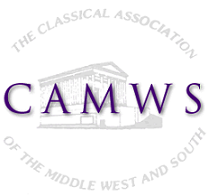A. Trevor Hodge
1930-2012
A. Trevor Hodge was born in Belfast, Northern Ireland on June 30, 1930, the son of Alfred, a mechanic who had been an ambulance driver in World War I, and Agnes Hodge. He graduated from the Royal Belfast Academical Institution in 1947 and received a B.A. from Cambridge in 1951, a Diploma in Classical Archaeology (1952), after which he spent a year at the British School of Archaeology in Athens, and two years at the British School at Rome. He received an M.A. in 1955 and Ph.D. from Cambridge in 1956, after which, this devotee of railroads worked for three months as the most educated operator of a signal box in Britain. He then decamped for North America where he held instructorships in classics at Stanford (1957-8), asst prof. Cornell (1958-9), University of Pennsylvania (1959-60). Carleton College in Ottawa was establishing a permanent campus and growing its one-person classics department in 1960. He married Colette Fabre, a French nurse visiting Ottawa, in 1965. He rose to associate professor (1963-6) then professor (1966-97), and on his retirement Distinguished Research Professor (1997-2012) of classics at Carleton College, Ottawa. Chaired department 1967-72) His most popular course at Carleton was Ancient Science and Technology. His early research focused on the most perishable of building materials, wood, particularly as used in Greek buildings. He then became an authority on Roman aqueducts and the Greek colonization of Southern France. His Cambridge thesis dealt with the vanished wood of Greek roofs, which resulted in his 1954 work on the carpentry of the roof of the Athenian treasury at Delphi and he ultimately led toThe Woodwork of Greek Roofs (Cambridge, 1960). In bow tie and with a thick Ulster accent, he was an animated and stimulating teacher. Engineers obliged to take a humanities course invariably took his and were challenged to construct ancient machines. His students over the years filled the storage rooms at Carleton with catapults, triremes, and two-headed axes, their metal extracted from ore as the ancients did. His most famous classroom and public lecture debunked by demonstration Herodotus’s story (6.115) of the shield signal at Marathon. He spent a portion of his retirement lecturing on cruise ships in the Caribbean and Mediterranean and described his "current ambition to combine his talents as railwayman, detective, and archaeologist by straightening out Agatha Christie on what really did happen in the Murder on the Orient Express." He also wrote a murder mystery set on the London-Mancester railway train, The Late Ulsterman (2008), which he published on his website. He regularly appeared on the CBC Court of Ideas radio series, with one famous episode putting Nero on trial for genocide and bad violin playing. and he contributed over 120 letters and contributions to the Ottawa Citizen. He died in Ottawa on February 16, 2012 at the age of 81.
Publications:
“A Roof at Delphi,” ABSA 49(1954) 202-214; The Woodwork of Greek Roofs(Cambridge: Cambridge U. Press, 1960); “The Auxerre Goddess,” EMC 31 (1987) 187-97; “Aqueducts,” in Roman Public Buildings, ed. I.M. Barton (Exeter: U. Exeter, 1989) 127-149; Future Currents in Aqueduct Studies (ed.) (Leeds: Cairns, 1991); Roman Aqueducts and Water Supply (London: Duckworth, 1992); “In Vitruvium Pompeianum: Urban Water Distribution Reappraised,” AJA 100,2 (1996) 261-76; Ancient Greek France (London: Duckworth, 1998); Frontinus' Legacy: Essays on Frontinus' De aquis urbis Romae, ed. with Deane R. Blackman with contributions from from Klaus Grewe et al. (Ann Arbor: University of Michigan Press, 2001); “Reflections on the Shield at Marathon,” ABSA 96(2001) 237-59.
— Ward Briggs
Sources: Ottawa Citizen, 25 February 2012; Toronto Globe and Mail 9 April 2012.
